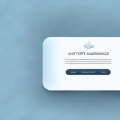If you’re an athlete, a fitness enthusiast, or someone who spends a lot of time sitting in front of a computer, you may experience muscle knots and tension in various parts of your body. Self-myofascial release can be a helpful technique to relieve these discomforts, and using a trigger point 5-inch ball is one of the most effective ways to do it. In this article, we’ll discuss everything you need to know about using a trigger point ball for self-myofascial release.
Understanding Myofascial Release and Trigger Points
Before we delve into the nitty-gritty of using a trigger point ball, let’s talk about myofascial release and trigger points. Myofascial release is a form of therapy that aims to release tension in the fascia (connective tissues that surround and support muscles) and muscles to reduce pain and improve mobility. Trigger points are tight spots in the muscle that can be painful and cause referred pain in other parts of the body.
Trigger points can be caused by a variety of factors, including poor posture, overuse of muscles, and stress. They can also develop as a result of injury or trauma to the muscle. When a trigger point is activated, it can cause pain, weakness, and limited range of motion in the affected muscle. Myofascial release techniques, such as using a trigger point ball, can help to release these tight spots and alleviate pain and discomfort.
Choosing the Right Trigger Point Ball for You
When it comes to choosing a trigger point ball, there are a few things you might want to consider. First, the size of the ball should be appropriate for the area you want to target. A 5-inch ball is ideal for larger areas such as your back, glutes, and legs. You also want to consider the ball’s density, as you may want a harder ball if you have deeper knots and prefer more pressure.
Another factor to consider when choosing a trigger point ball is the material it is made of. Some people prefer a softer ball made of foam, while others prefer a harder ball made of rubber or plastic. It’s important to choose a material that feels comfortable for you and provides the right amount of pressure for your needs. Additionally, you may want to consider the shape of the ball. Some trigger point balls are round, while others have a more oblong shape that can be better for targeting specific areas. Ultimately, the right trigger point ball for you will depend on your individual preferences and needs.
Preparing Your Body for Self-Myofascial Release
Before getting started with a trigger point ball, it’s essential to warm up your body, so the muscles are more pliable and receptive to the therapy. This can be done with light cardio, dynamic stretching, or using a foam roller.
It’s also important to stay hydrated before and after self-myofascial release. Drinking water helps to flush out toxins and prevent muscle soreness. Additionally, it’s recommended to start with a lower intensity and gradually increase pressure as your body becomes more accustomed to the therapy. Remember to listen to your body and stop if you experience any pain or discomfort.
Step-by-Step Guide to Using a Trigger Point 5-Inch Ball
Now that you’ve selected your trigger point ball and warmed up your muscles, it’s time to get started with the self-myofascial release. Here’s a step-by-step guide:
- Find a comfortable surface and position the ball under the area you want to target
- Gently apply pressure to the ball and hold for 30-60 seconds
- Move the ball to a different area and repeat the process
- Continue until you have targeted all the areas you want to cover.
It’s important to note that you may experience some discomfort or even pain during the self-myofascial release process. However, it’s important to distinguish between discomfort and pain. Discomfort is a normal sensation during the process, but if you experience sharp or intense pain, stop immediately and consult with a healthcare professional. Additionally, it’s recommended to drink plenty of water after the self-myofascial release to help flush out any toxins released during the process.
Common Mistakes to Avoid During Self-Myofascial Release
While self-myofascial release can be a valuable tool to relieve muscle tension, there are some common mistakes to look out for. These include:
- Applying too much pressure, which can cause pain and bruising
- Rolling too fast, which doesn’t allow for the proper release of the trigger points
- Overusing the trigger point ball, which can cause further damage to the muscles
It’s important to note that self-myofascial release should not be used as a substitute for professional medical treatment. If you are experiencing chronic pain or have a serious injury, it’s best to consult with a healthcare provider before attempting self-treatment. Additionally, it’s important to listen to your body and not push through pain during self-myofascial release. If you experience discomfort or pain, it’s best to stop and reassess your technique or seek professional guidance.
Targeting Specific Areas of Tension with the Trigger Point Ball
There are several areas of the body where you can use a trigger point ball for self-myofascial release, including:
- Upper back and shoulders
- Lower back and glutes
- Hamstrings and quadriceps
- Calf muscles
- Feet
It is important to note that when using a trigger point ball, you should focus on specific areas of tension or discomfort. By applying pressure to these areas, you can release tightness and improve mobility. However, it is also important to avoid using the ball on areas that are injured or inflamed, as this can exacerbate the issue. Always listen to your body and consult with a healthcare professional if you have any concerns.
Combining Trigger Point Therapy with Stretching and Exercise
Using a trigger point ball can be even more effective when combined with stretching and exercise. Stretching can help to increase range of motion, while exercise can help to strengthen the muscles, making them less prone to tension and knots.
Additionally, incorporating trigger point therapy into your stretching and exercise routine can also help to improve overall flexibility and reduce the risk of injury. By targeting specific trigger points, you can release tension and improve blood flow to the muscles, allowing for greater mobility and ease of movement.
How Often Should You Practice Self-Myofascial Release?
The frequency with which you should practice self-myofascial release depends on your level of physical activity and the amount of muscle tension you experience. Generally, practicing for 10-15 minutes per day a few times a week can be beneficial for most people.
However, if you are an athlete or engage in intense physical activity on a regular basis, you may benefit from practicing self-myofascial release more frequently. In this case, practicing for 10-15 minutes before and after your workouts can help to prevent muscle soreness and improve your overall performance.
Additional Tools and Techniques for Myofascial Release at Home
While a trigger point ball is an effective tool for self-myofascial release, there are other tools and techniques you can use to target different areas of the body. These include foam rollers, massage sticks, and lacrosse balls. Additionally, getting regular massages or seeing a physical therapist can be helpful in maintaining optimal muscle health.
With this guide, you now have all the information you need to get started with self-myofascial release using a trigger point ball. Remember to take it slow and focus on proper form to avoid injuries and get the most out of your practice. Happy rolling!




